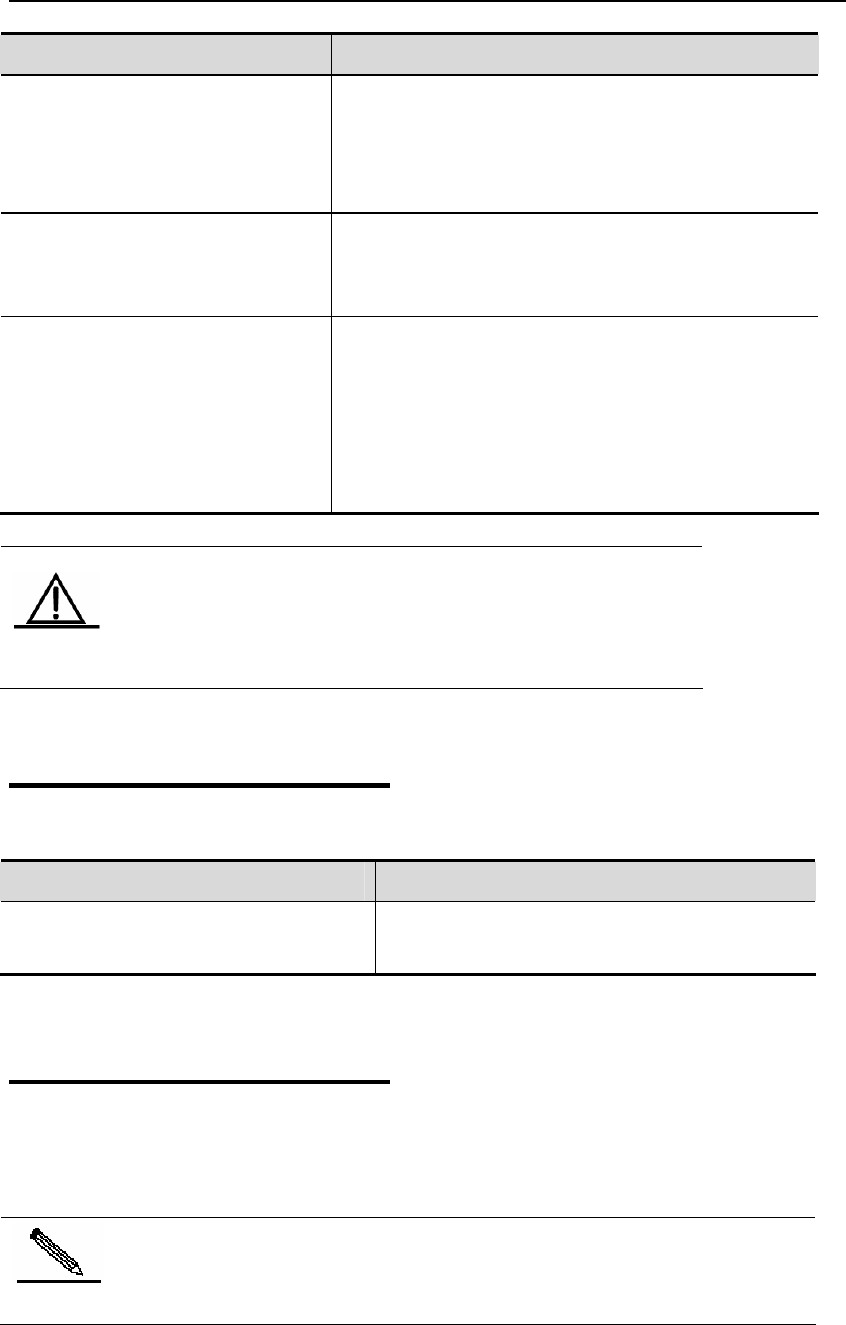
DES-7200 Configuration Guide Chapter 2 RADIUS Configuration
2-9
Command Function
DES-7200(config)# radius-server
dead-criteria time seconds tries
number
Globally configure the dead-criteria conditions for a
RADIUS server to be marked as dead.
The default value of “seconds” is 60, and the default value
of “number” is 10.
DES-7200(config)# radius-server
deadtime minutes
Configure the duration for the device to stop sending
request packets to the RADIUS server in unreachable
state (default: 0 minute).
DES-7200(config)# radius-server
host ip-address [auth-port port]
[acct-port port] [test username name
[idle-time time] [ignore-auth-port]
[ignore-acct-port]]
Configure the IP address of remote RADIUS server,
specify the authentication port and accounting port, and
specify relevant parameters of active detection (testing
user name, interval for active detection of RADIUS server
in reachable state, and whether the authentication port or
the accounting port shall be neglected).
Caution
The dedicated testing user name shall be used. This user name
must not be used by other valid access users, so as not to affect
the authentication, authorization or accounting of other valid
users.
2.3 Monitoring RADIUS
To monitor the RADIUS, execute the following commands in the privileged user mode:
Command Function
debug radius event
Turn on the Radius debug switch to view the Radius
debug information
2.4 Radius Configuration
Example
In a typical Radius network configuration diagram, the RADIUS server performs authentication
for the visiting users, enables the accounting function for the visiting users and records the
network usage of the users.
Note
The RADIUS server can be a component that comes with the Windows
2000/2003 server (IAS) or the UNIX system, or the special server software of
some manufacturers.
Here is an example on how to configure the Radius for network device:
DES-7200# configure terminal


















